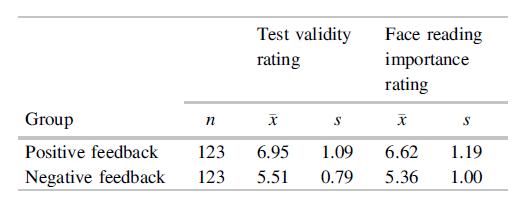To assess the tendency of people to rationalize poor performance, 246 college students were randomly assigned to
Question:
To assess the tendency of people to rationalize poor performance, 246 college students were randomly assigned to one of two groups: a negative feedback group and a positive feedback group. All students took a test which asked them to identify people’s emotions based on photographs of their faces. Those in the negative feedback group were all given D grades, while those in the positive feedback group received A’s (regardless of how they actually performed). A follow-up questionnaire asked students to assess the validity of the test and the importance of being able to read people’s faces. The results of these two follow-up surveys appear below.

a. Test the hypothesis that negative feedback is associated with a lower average validity rating than positive feedback at the α = .01 level.
b. Test the hypothesis that students receiving positive feedback rate face-reading as more important, on average, than do students receiving negative feedback. Again use a 1% significance level.
c. Is it reasonable to conclude that the results seen in parts (a) and (b) are attributable to the different types of feedback? Why or why not?
Step by Step Answer:

Modern Mathematical Statistics With Applications
ISBN: 9783030551551
3rd Edition
Authors: Jay L. Devore, Kenneth N. Berk, Matthew A. Carlton





